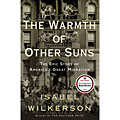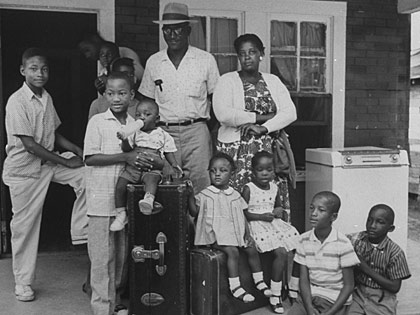AARP Hearing Center


Every now and then you read a book that richly echoes your own experience. The book that did that for me in 2010 was Isabel Wilkerson's The Warmth of Other Suns: The Epic Story of America’s Great Migration, which recounts how more than 5.5 million black Americans abandoned the South in the half-century between World War I and 1970, radically transforming the black American population from primarily rural to primarily urban.
I was born in Washington, D.C. in 1943, then spent my middle and high school years in Springfield, Mass. So while much of this story unfolded before my time, as an African American who grew up in New England I am a child of the mass movement Wilkerson retraces here.
My mother, also born in D.C., was the daughter of Mississippi migrants; her father, Swan, had made his way to the nation's capital in 1909, and he sent for his wife, Ruby, within a few years. As for my father, he had been packed off to D.C. from Durham, N.C., by his mother around 1930, joining an older brother who already lived there. In Washington, she expected, he would be able to shape a life better than anything possible in Durham. My mother and father met in 1940 in Baltimore, where she was teaching school; by then, they had both graduated from historically black Howard University (and my father had gone on to divinity studies there).
My parents' stories are emblematic of the millions who would flee the South later in the 20th century. So too are the biographies of the three black migrants that Wilkerson has chosen to focus on in The Warmth of Other Suns. Through them, her vivid, compelling prose and insights advance our understanding of the outsize social impact of this exodus — not just on black life in particular, but on American life in general. By taking us into the gritty lives these three lived in the South, Wilkerson makes us feel the raw, restrictive racism that they and other black migrants traveled north and west to escape:
- George Swanson Starling had attempted to organize black fruit pickers to demand better pay in Florida; he fled the state on the verge of becoming a victim of white mob violence.
- Mississippi sharecropper Ida Mae Brandon Gladney felt her life being crushed by the "invisible hand [that] determined white people were in charge and colored people were under them."
- And Dr. Robert Joseph Pershing Foster, his medical credentials notwithstanding, was bumping up against the vexatiously low ceiling on black professional opportunity in his native Louisiana.
Upon moving to "the promised land," however, all three (and, by extension, millions like them) found it delivered far less than it had promised from afar. Walking into a bar near New York City's Penn Station, for example, Starling and a friend were served the drinks they ordered. But no sooner had they finished and paid their tab than the bartender picked up their glasses and smashed them under the counter. There were no "colored" or "white" signs in the city, notes Starling, yet he found it "tricky" making his way through a place that "looked free" but was not always so for blacks.


































































More From AARP
Twelve Steps to a Compassionate Life
A review of religious historian Karen Armstrong's step-by-step program to more compassionate living.